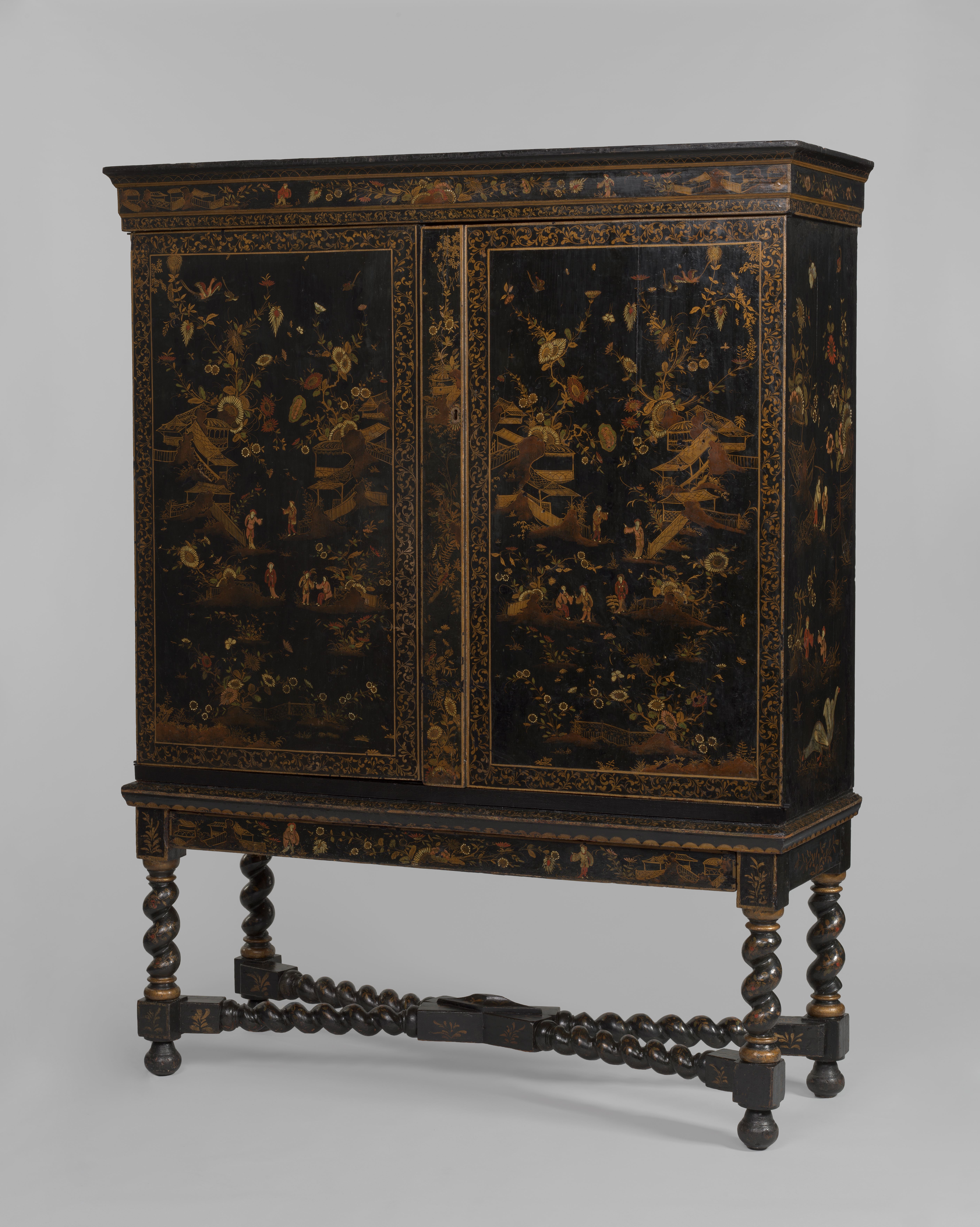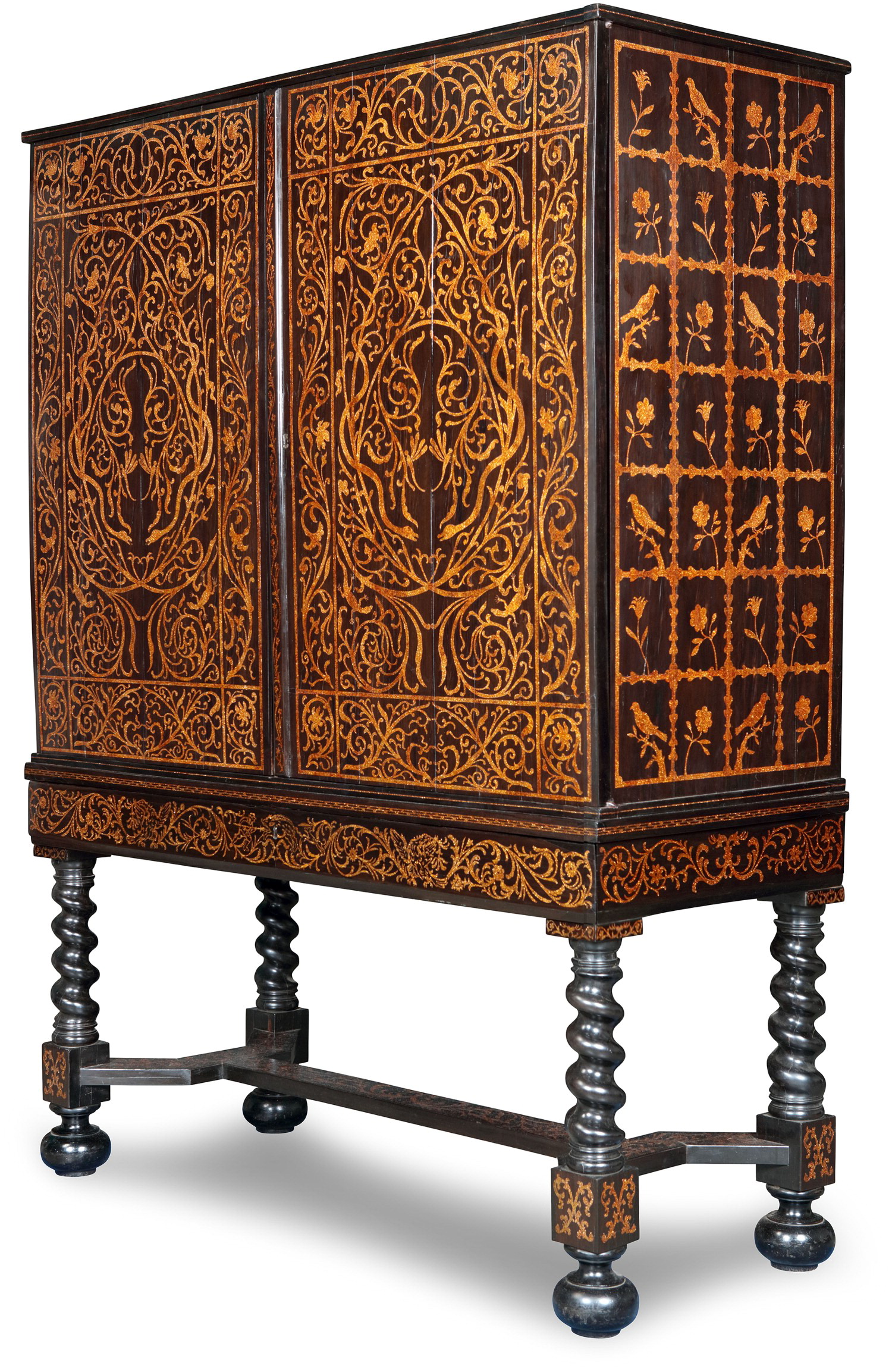The Netherlands
by Vincent Cattersel
The earliest center of European lacquer production is found in the city of Amsterdam. Here, thanks to the archival research of Lunsingh Scheurleer (1940–41, p. 54–74) the name of Willem Kick showed up. His archival research revealed that Kick not only played a central role in the so-called 'compagnie van lackwercken' ('company for lacquer works') in Amsterdam in 1610; he also was commissioned to produce a prestigious European lacquer chest for Sultan Ahmed I. Willem Kick's legacy is physically preserved by a handful of small boxes, a cabinet and a lacquered pewter plate in the Museum für Lackkunst, the Rijksmuseum Amsterdam (see Rijksmuseum collection), and lacquered porcelain plates preserved at the Uppsala University Museum. Although all known objects attributed to Kick's hand or workshop remain anonymous (i.e., no signature), former director of the Museum für Lackkunst (Münster, Germany) has published on the stylistic relationship between the attributed objects (Kopplin, 2019).
From a material technical point of view, little information is known. Baarsen and Hagelskamp published an article on the historical and material technical context of the Willem Kick box preserved at the Rijksmuseum of Amsterdam. In 2022 a material-technical study on the Willem Kick corpus at the Museum für Lackkunst and the Rijksmuseum was executed by Vanmassenhove and Cattersel. This unpublished material-technical study revealed that within the studied corpus of Kick attributed objects, there appears to be a materialt-technical relationship regarding the build-up of the painted decoration, the construction of boxes and use of materials, however, by lack of in-depth material-technical studies of lacquered or painted boxes (like for instance, Bois de Spa), it remains uncertain whether these findings are a unique fingerprint of Kick workshop, or are 'universal' construction methods.
Similar to much of Europe, the popularity of European lacquerware, as well as lacquer as a material in general, experienced a surge in popularity. European lacquers were applied on a variety of commodities. One example is a magnificent Dutch 17th century cabinet, recently restored to its original appearance by Andersson (Fig. 14, video, webpage).

Another stunning example of a European lacquer cabinet decorated with 'aventurine' (metal particles embedded in the lacquer matrix; comparable to the maki-e technique) can be seen in Fig. 15.

